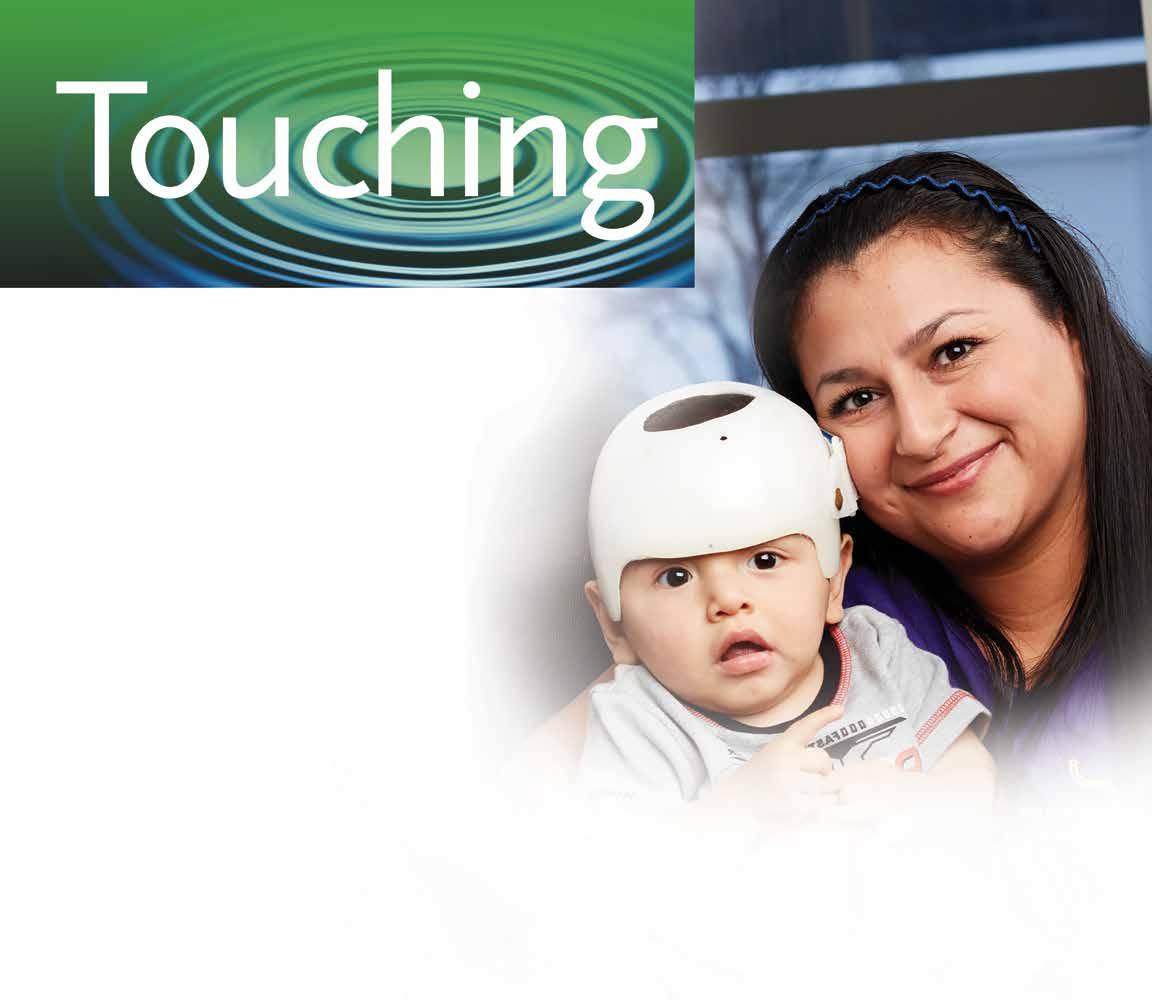
2 minute read
Prompt diagnosis puts baby back on track Shaping Jesus’ skull and future
Fifteen-month-old Jesus Juarez’ smile throws off a light that draws you in like a beacon. Maybe it’s because his future looks bright, although it didn’t always seem so. Jesus was born prematurely and later diagnosed with an uncommon skull condition that can affect appearance and brain development.
A complicated pregnancy
Jesus’ parents are SanJuanita Vazquez and Lazaro Juarez Sr., of rural Hector. While carrying Jesus, SanJuanita developed preeclampsia. The symptoms are dangerously high blood pressure, elevated protein in the urine and swelling of the feet, legs and hands. Pre-eclampsia can lead to lifethreatening complications. The only cure is to deliver the baby.
When SanJuanita’s blood pressure spiked during the thirty-first week of pregnancy, her Glencoe Regional Health Services (GRHS) obstetrician, John Mark Johnson, DO, FACOOG, sent her by ambulance to Abbott Northwestern Hospital in Minneapolis. There, clinicians monitored her condition and made a daily decision as to whether it would be better for unborn Jesus to stay in the womb or be delivered early.
Nearly three weeks later, doctors decided the time had come. They induced labor and Jesus was born at 34 weeks of pregnancy, weighing just 3.81 pounds. He spent four days in a neonatal intensive care unit (NICU), followed by two weeks of hospitalization to gain weight before going home at 4.36 pounds.
An unexpected bump
GRHS pediatrician Alexandria Kalina, MD, became Jesus’ primary care provider two days after his hospital discharge and has seen him for all of his well baby visits and illness care since then.
Right from the start, Jesus almost always met developmental milestones, even without adjusting for his premature birth. But at his six-month visit, Dr. Kalina could no longer feel Jesus’ fontanelle, which is a smooth “soft spot” normally found on babies’ heads. Instead, she felt little peaks and ridges. A computed tomography (CT) scan confirmed that Jesus had craniosynostosis. Simply put, this word means “fused bones in the skull.”
Infants are born with openings between the bones in their skulls that allow the skull to expand as the baby’s brain grows. These openings are actually joints – called sutures – that typically close between 18 and 24 months of age. In Jesus’ case, one
We are adding several providers to our medical staff during 2016. John Heller, MD, is a urologist who became a permanent member of our medical staff in February after serving as a visiting specialist since 1989. Next up is Nora Burkart, MD, a general surgeon who will begin seeing patients here in early April. She’s a fluent speaker of English, Spanish, Portuguese and French, so brush up on your language skills for an engaging chat with her. Ashley Hieronimus, MD, an obstetrics and gynecology physician, will join us in August and Kristen Budahn, MD, will become a permanent member of our family medicine team in September after completing several rotations here during her training.
A retired member of our staff made the news recently for qualities that are well known to us locally. Peter Smyth, MD, FACP, received an award for community service from the Minnesota chapter of the American College of Physicians in November. It came with a $1,000 donation to the charity of Dr. Smyth’s choice, which the GRHS Foundation was honored to receive in recognition of his long career here.
It’s always exciting to welcome new faces and cheer for old friends, but sometimes we must also say goodbye. Curt Forst, MPAS, a physician assistant in our family medicine department since 1999, has advised us that he will retire from GRHS at the end of April. We will certainly miss him and wish him all the best in his retirement.




